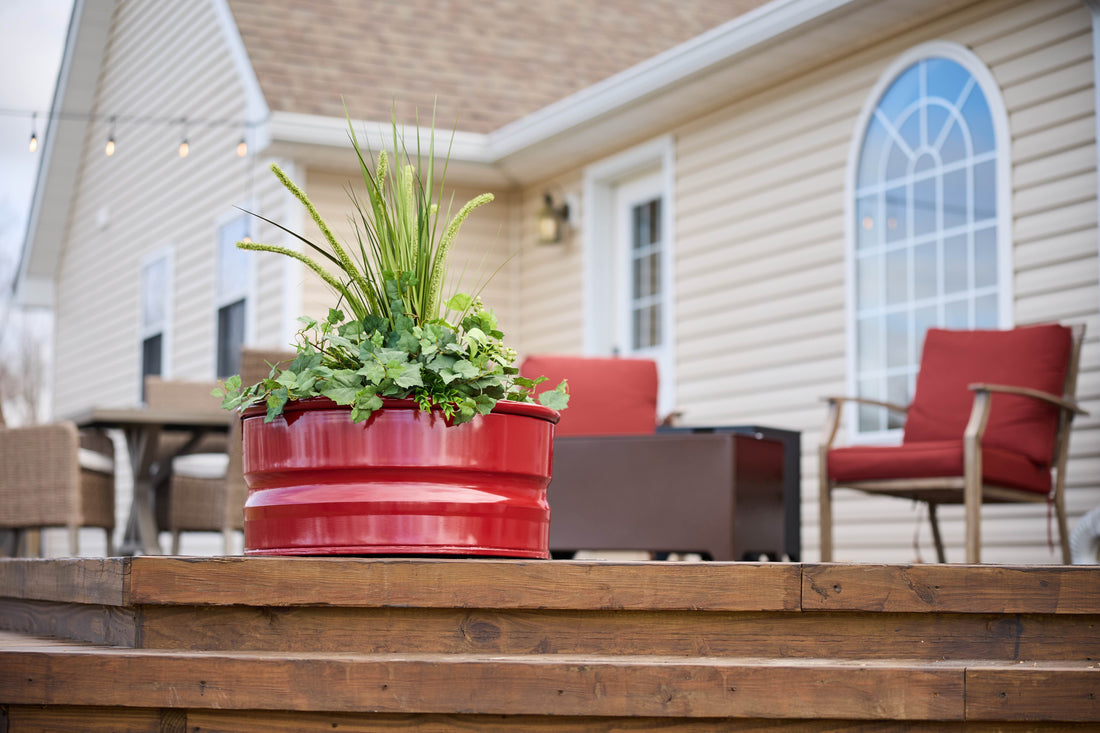
Tips for Planting in Garden Planters
When it comes to creating a vibrant outdoor space, garden planters are essential. Whether you are working with a small balcony or a spacious backyard, the right planters will add beauty and functionality to your garden. However, to truly make the most of your garden planters, it is crucial to plant properly. This blog post will explore the importance of proper planting and various planting methods
The Importance of Properly Planting Your Garden Planters
Proper planting in garden planters is the foundation for a successful garden. Not only does it impact the immediate aesthetic appeal, but it also affects the long-term health and growth of your plants. Here are a few reasons why proper planting is important:
- Root Development: Adequate space and soil quality allow roots to establish themselves properly. Well-planted garden planters promote the growth of a robust root system, which is necessary for nutrient absorption and overall plant health.
- Moisture Control: The way you plant can influence how water is retained within the planter. Proper planting techniques help ensure that your plants get the right amount of moisture, preventing overwatering or drought stress.
- Nutrient Availability: Healthy soil composition and planting depth play significant roles in how effectively plants can access nutrients. Properly planted garden planters provide the ideal conditions for nutrient uptake.
- Pest and Disease Resistance: Well-planted gardens are often more resilient to pests and diseases. This includes using companion planting techniques and ensuring plants have adequate space to promote airflow and reduce fungal issues.
With these factors in mind, let's explore various methods of planting in garden planters and their benefits.
Types of Planting Methods for Garden Planters
Traditional Planting:
- How It Works: This straightforward method involves filling the planter with quality potting soil and planting directly into it.
- Benefits: It’s easy to implement and works well for a variety of plants. The soil can be customized for the specific plants you wish to grow.
- Tips: Ensure that the planter has drainage holes, and select the right potting mix for your plants’ needs.
Layering (Lasagna Gardening):
- How It Works: This method involves layering organic materials (e.g., cardboard, kitchen scraps, compost) along with soil in the planter.
- Benefits: It boosts soil fertility and moisture retention over time as the layers decompose.
- Tips: Start with a base of coarse materials for drainage, followed by layers of organic waste and topped with soil.
Vertical Planting:
- How It Works: Utilizing vertical space, this method incorporates trellises or multi-tiered planters to grow plants upward.
- Benefits: It saves space and can create a beautiful visual effect in smaller areas.
- Tips: Choose climbing plants such as beans or cucumbers that thrive in a vertical format.
Hugelkultur Method:
- How It Works: Hugelkultur involves creating a mound of decomposing wood and other organic matter, which is then covered with soil in the planter. This method mimics a natural forest floor, where decaying wood provides nutrients over time.
- Benefits: It improves soil structure, retains moisture efficiently, and supports a rich ecosystem for beneficial organisms.
- Tips: Gather logs, branches, and grass clippings to create the mound; allow the materials to decompose for a while, then plant directly into the mound.
The Hugelkultur Method
The hugelkultur method is gaining popularity among home gardeners looking for sustainable planting techniques that work effectively in garden planters. Here’s a detailed look at how this method works, its benefits, and practical tips to implement it successfully.

How Hugelkultur Works
Hugelkultur is rooted in permaculture practices. To set up a hugelkultur garden planter:
- Gather Materials: Start with logs, branches, leaves, and other organic matter. As wood decomposes, it releases nutrients for the plants growing above.
- Build the Mound: Arrange the larger logs at the bottom, followed by smaller branches and layers of green materials such as grass clippings or kitchen scraps. Finally, cover it with a thick layer of soil.
- Planting: Once the mound is established, you can plant directly into the soil at the top of the mound. The decomposed matter beneath will help retain moisture and provide nutrients.
Benefits of Hugelkultur
Water Retention: The logs and woody materials in the mound absorb and retain moisture, reducing the need for frequent watering
Check out our collection of Tarter Home planters and get your patio and garden in shape this year
